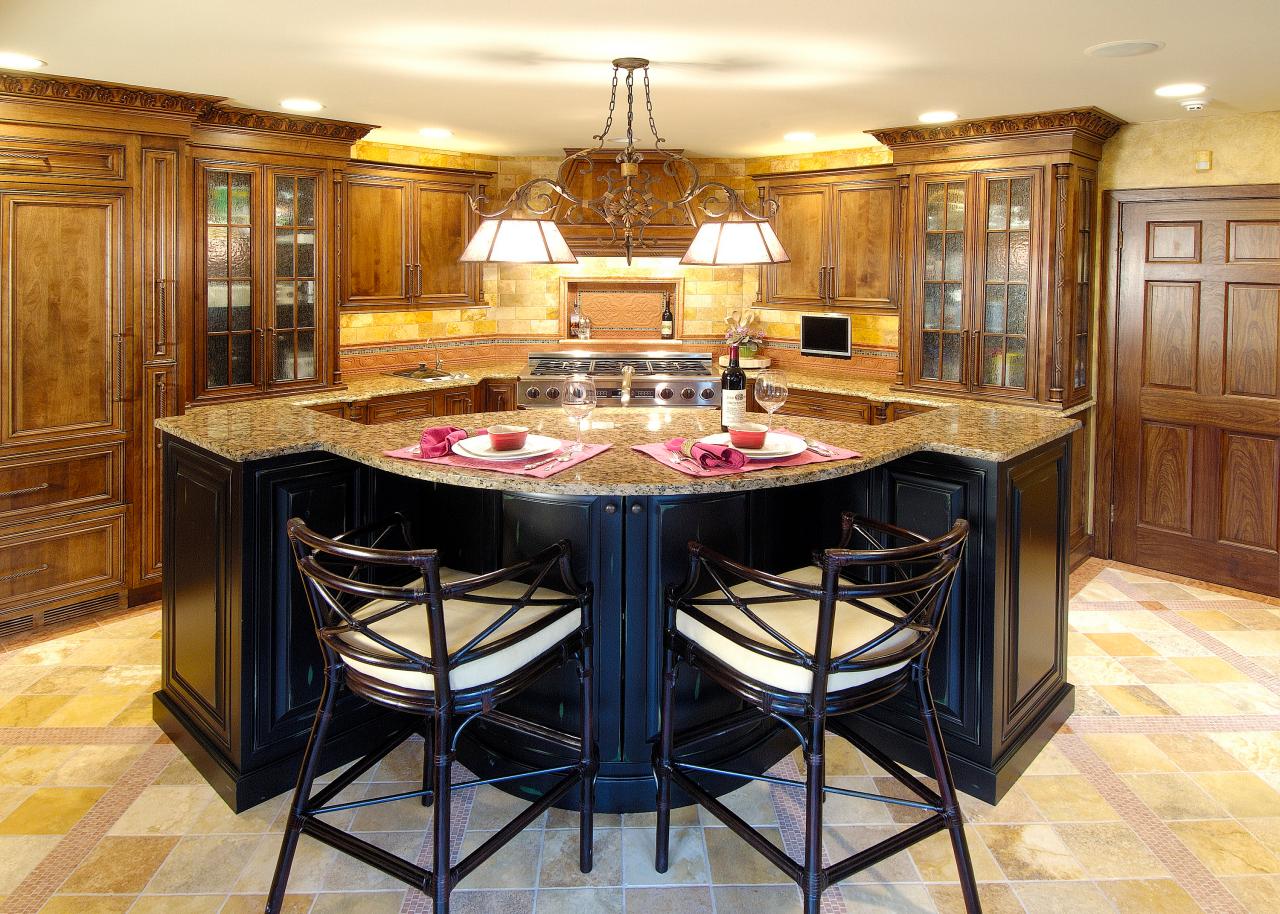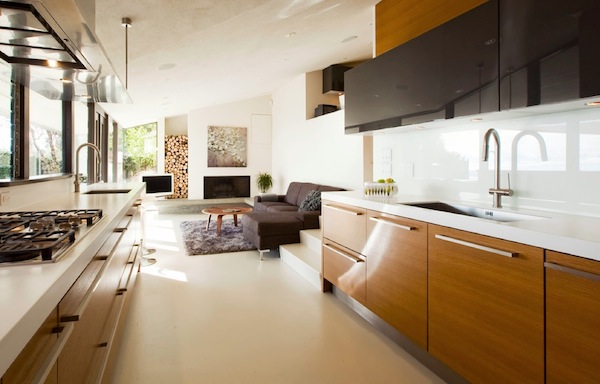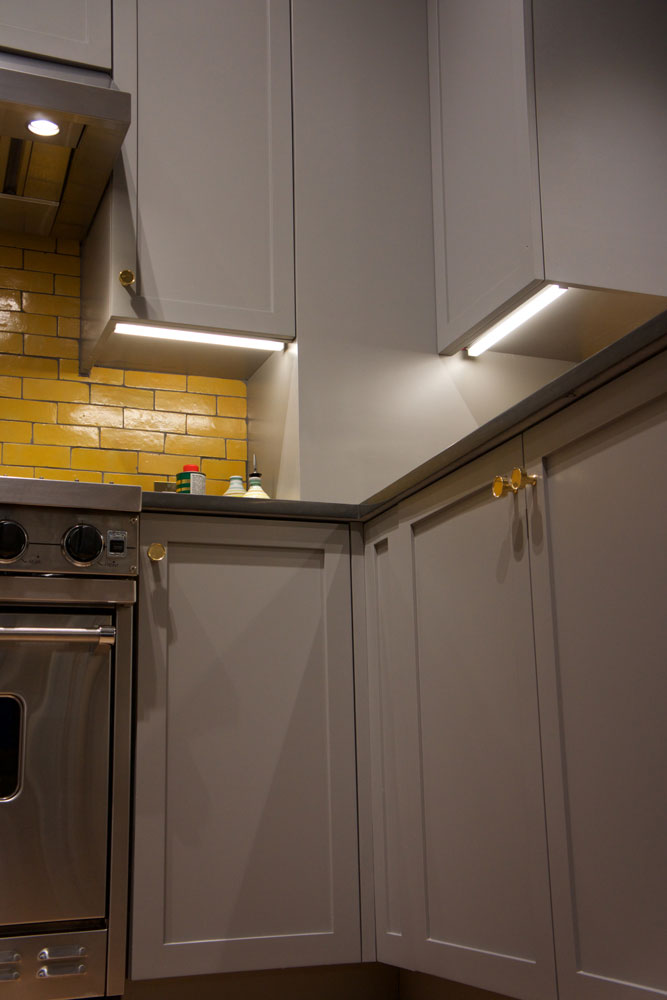Under-cabinet kitchen lighting has become an essential feature in modern kitchens, adding both functionality and ambiance to the space. Properly installed under-cabinet lighting illuminates countertops, making it easier to see while preparing food or doing other kitchen tasks. These lights, mounted on the underside of upper cabinets, not only help reduce shadows but also highlight the beauty of kitchen backsplashes, countertops, and cabinetry. They are particularly beneficial in kitchens with limited natural light, as they can effectively brighten up darker spaces, giving a well-lit and visually appealing cooking environment.
There are several types of under-cabinet lighting to choose from, each with its unique characteristics and advantages. LED lights are by far the most popular choice because of their energy efficiency, long lifespan, and the variety of colors and intensities available. LED strip lights and puck lights, in particular, are versatile options that allow for custom lighting designs. Fluorescent lights are another option and provide bright, cool lighting, but they are generally less energy-efficient and don’t offer the same level of color customization as LEDs. Xenon lights produce a warm, inviting glow but tend to generate more heat and consume more energy.

LED strip lights are a popular option for under-cabinet lighting due to their slim profile and ease of installation. These flexible strips can be cut to fit any cabinet length and can be adhered directly to the cabinet’s underside. They are available in various color temperatures, from warm to cool, and some even offer RGB options for colored lighting effects. LED strips are also dimmable, allowing you to adjust the brightness to suit different tasks or create a cozy ambiance during evening hours. For homeowners who prioritize energy efficiency and longevity, LED strips are an excellent choice.
Puck lights are small, round fixtures that can be installed individually to create spotlighting on the countertop below. They provide more focused lighting than strip lights and are often spaced apart to create specific areas of light under each cabinet section. Puck lights work well for highlighting particular areas, such as a coffee station or prep zone. They are available in both LED and halogen versions, with LED being the preferred choice for energy efficiency and longer life. Additionally, puck lights can create a beautiful shadow effect on textured backsplashes, adding an artistic dimension to the kitchen design.

Fluorescent lights, although not as common as LEDs, are another option for under-cabinet lighting. They are typically available in longer, tube-shaped fixtures, making them suitable for extended lighting without breaks. While fluorescent lights offer a bright, even glow, they do not provide as much flexibility in color temperature or dimming options. However, they are still popular in some kitchens due to their affordability and ability to deliver a consistent, bright light. Fluorescent bulbs are also cool to the touch, which can be an advantage in small, enclosed kitchen spaces where excess heat can be an issue.
Another consideration when choosing under-cabinet lighting is the color temperature. Color temperature, measured in Kelvin (K), affects the warmth or coolness of the light. A warmer light (around 2700K-3000K) creates a cozy, welcoming atmosphere, while cooler light (4000K-5000K) is closer to natural daylight and is ideal for task lighting. Warmer lights tend to work well in traditional kitchens with wood cabinetry, while cooler lights enhance modern kitchen designs. Selecting the right color temperature can enhance the kitchen’s aesthetics, making the space more inviting and practical.

Dimmable under-cabinet lighting is a valuable feature that offers versatility in how the kitchen is illuminated. With dimmable lights, you can adjust the brightness to fit the time of day, task, or mood. For instance, brighter lighting is helpful for food preparation, while lower light levels are suitable for a relaxed atmosphere during dinner. Many LED strips and puck lights are compatible with dimmer switches or come with remote controls, allowing for easy brightness adjustments. This flexibility not only enhances functionality but also contributes to energy savings by using only as much light as needed.
Installation options vary for under-cabinet lighting, with some systems being easier to install than others. Plug-in lights are convenient and don’t require electrical work; they plug into standard outlets and can be mounted quickly, making them an ideal choice for renters or temporary installations. Hardwired lights are connected directly to the home’s electrical system, providing a cleaner look without visible cords. Hardwiring usually requires professional installation but offers the benefit of a more seamless, integrated appearance. Battery-operated lights are also available, though they may need frequent battery changes and are best for occasional use.
Under-cabinet lighting can also enhance kitchen safety by improving visibility in critical areas. With well-placed lighting, it’s easier to see sharp objects, measure ingredients accurately, and monitor cooking progress. This is particularly useful for elderly family members or households with children, where extra lighting can reduce the risk of accidents. Additionally, under-cabinet lights can serve as low-level nightlights, providing a gentle glow that guides family members through the kitchen during the night without the need for overhead lights.

In terms of aesthetics, under-cabinet lighting can completely transform a kitchen’s visual appeal. When paired with a beautiful backsplash, the light can bring out intricate details in tile or stone patterns, adding depth and dimension to the kitchen decor. This type of lighting also makes polished countertops shine, drawing attention to the unique veining in natural stone or the gloss in quartz. For open-concept kitchens, under-cabinet lighting helps create a smooth transition between kitchen and living areas, visually anchoring the space and highlighting its design elements.
Energy efficiency is another significant benefit of modern under-cabinet lighting, especially with LED options. LED lights consume up to 80% less energy than incandescent bulbs and last much longer, reducing both energy bills and replacement costs. For environmentally conscious homeowners, LEDs also have a lower carbon footprint and do not contain hazardous materials like mercury, which is found in some fluorescent lights. This makes LEDs an eco-friendly choice, contributing to a more sustainable home environment.
Smart under-cabinet lighting is an emerging trend that integrates lighting with home automation systems. Many LED strip lights and puck lights are now compatible with smart home systems, allowing you to control the lights via smartphone apps, voice commands, or even sensors. Smart lighting can be programmed to turn on at specific times, adjust brightness levels throughout the day, or activate motion sensors at night. This level of control not only enhances convenience but also adds a layer of sophistication to the kitchen’s overall design.

Maintenance is relatively simple for under-cabinet lighting, but it does require some attention to keep the lights performing well. Regularly dusting and wiping down the lights helps maintain brightness, especially for LED strips that can accumulate grease from cooking. In addition, checking for burned-out bulbs and replacing them promptly ensures even lighting across the countertops. LED lights have the advantage of requiring minimal maintenance due to their long lifespan, but other types like fluorescent and halogen may need more frequent bulb replacements.
Choosing the right placement is crucial for achieving balanced, shadow-free lighting under cabinets. Placing the lights near the front edge of the cabinet illuminates the countertop most effectively and minimizes shadows. It’s also essential to space the lights evenly to avoid areas with uneven lighting, which can be distracting and reduce functionality. For a continuous, uninterrupted glow, LED strip lights offer the most coverage, while puck lights provide focused lighting that may leave some spaces dimmer. Proper placement enhances both the kitchen’s functionality and its visual appeal.
Adding under-cabinet lighting can increase the value of a home by upgrading the kitchen’s functionality and aesthetic appeal. Many homebuyers view it as a valuable feature, as it indicates a well-designed kitchen with thoughtful details. In addition, high-quality under-cabinet lighting can give a kitchen a polished, upscale look, which can be a deciding factor for potential buyers. For homeowners planning to sell, this relatively inexpensive upgrade can help their kitchen stand out in a competitive real estate market.

Common Mistakes to Avoid
Choosing the Wrong Light Color Temperature: Selecting a color temperature that doesn’t match the kitchen’s design can affect the ambiance. For example, overly cool lights can make a warm, traditional kitchen feel cold and uninviting.
Incorrect Placement: Placing lights too far back under the cabinet can cast unwanted shadows on the countertop. Positioning lights near the front edge provides more even and effective illumination.
Skipping a Dimmer Feature: Non-dimmable lights can be overly bright for certain tasks or create glare in the kitchen. Installing dimmable lights gives better control over lighting intensity.
Not Sealing LED Strips Properly: In kitchens, LED strips can be exposed to moisture and grease. If they are not sealed or rated for kitchen use, they may degrade quickly.
Using High-Heat Lights in Enclosed Spaces: High-heat lights, like halogens, can be problematic under cabinets, potentially damaging cabinets or heating the kitchen. LEDs are a safer, cooler option.
Poor Electrical Planning: For hardwired options, inadequate planning can lead to exposed wires or unsightly installations. Professional help ensures clean and safe electrical connections.

What is the best type of under-cabinet lighting for energy efficiency?
LED lights are the most energy-efficient option for under-cabinet lighting. They consume significantly less power than incandescent or fluorescent bulbs and have a longer lifespan, reducing both energy and replacement costs. Their versatility and color options also make them a popular choice for modern kitchens.
Can under-cabinet lighting be added to an existing kitchen without rewiring?
Yes, plug-in or battery-operated under-cabinet lights are ideal for adding lighting without complex electrical work. For a more integrated look, though, hardwired installations are recommended, although they might require professional assistance.
What color temperature is best for under-cabinet lighting in a kitchen?
Color temperature depends on personal preference and kitchen style. A warm temperature (2700K-3000K) is ideal for a cozy feel, while a cooler temperature (4000K-5000K) offers a brighter, more neutral light, beneficial for task lighting in food preparation areas.

How long do LED under-cabinet lights last?
LED lights can last up to 50,000 hours, which is much longer than traditional bulbs. This longevity makes LEDs cost-effective and low-maintenance for under-cabinet lighting, requiring fewer replacements over the years.
Are under-cabinet lights safe to leave on for extended periods?
Yes, especially if using LEDs, which generate minimal heat. They’re safe to run for long hours, and dimmable options can provide a softer nightlight setting, ideal for those who prefer ambient light in the kitchen during evening hours.
Is dimmable under-cabinet lighting worth it?
Dimmable lighting is a worthwhile feature as it allows flexibility in brightness, suitable for both task lighting and softer ambient lighting. It also helps save energy by using lower light levels when full brightness isn’t necessary, making it a valuable addition to any kitchen.

Related Posts:
- Led Kitchen Lights B&Q
- Kitchen Lighting Design Guide
- Home Depot Hanging Kitchen Lights
- DIY Lights Under Kitchen Cabinets
- Island Pendant Lights Kitchen
- Overhead Kitchen Cabinet Lighting
- Kitchen Recessed Lighting Bulbs
- Best Fluorescent Light Bulbs For Kitchen
- Undermount Lighting In Kitchen
- Dark Vs Light Kitchen Cabinets